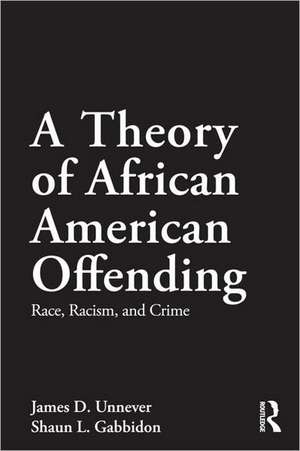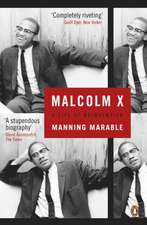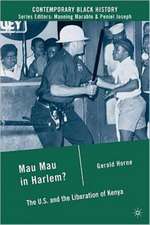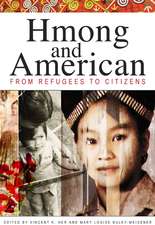A Theory of African American Offending: Race, Racism, and Crime: Criminology and Justice Studies
Autor James D. Unnever, Shaun L. Gabbidonen Limba Engleză Paperback – 28 feb 2011
| Toate formatele și edițiile | Preț | Express |
|---|---|---|
| Paperback (1) | 340.85 lei 6-8 săpt. | |
| Taylor & Francis – 28 feb 2011 | 340.85 lei 6-8 săpt. | |
| Hardback (1) | 1221.56 lei 6-8 săpt. | |
| Taylor & Francis – 28 feb 2011 | 1221.56 lei 6-8 săpt. |
Din seria Criminology and Justice Studies
- 15%
 Preț: 582.24 lei
Preț: 582.24 lei -
 Preț: 311.41 lei
Preț: 311.41 lei -
 Preț: 142.53 lei
Preț: 142.53 lei - 8%
 Preț: 391.95 lei
Preț: 391.95 lei - 8%
 Preț: 488.23 lei
Preț: 488.23 lei -
 Preț: 125.78 lei
Preț: 125.78 lei - 9%
 Preț: 612.78 lei
Preț: 612.78 lei - 8%
 Preț: 418.19 lei
Preț: 418.19 lei -
 Preț: 453.84 lei
Preț: 453.84 lei -
 Preț: 349.80 lei
Preț: 349.80 lei - 18%
 Preț: 1000.27 lei
Preț: 1000.27 lei - 15%
 Preț: 542.51 lei
Preț: 542.51 lei -
 Preț: 465.39 lei
Preț: 465.39 lei - 15%
 Preț: 575.63 lei
Preț: 575.63 lei - 22%
 Preț: 459.60 lei
Preț: 459.60 lei -
 Preț: 309.27 lei
Preț: 309.27 lei - 22%
 Preț: 431.22 lei
Preț: 431.22 lei - 5%
 Preț: 481.73 lei
Preț: 481.73 lei - 21%
 Preț: 420.66 lei
Preț: 420.66 lei -
 Preț: 449.72 lei
Preț: 449.72 lei - 18%
 Preț: 1116.02 lei
Preț: 1116.02 lei - 23%
 Preț: 327.80 lei
Preț: 327.80 lei -
 Preț: 351.80 lei
Preț: 351.80 lei - 15%
 Preț: 624.48 lei
Preț: 624.48 lei - 15%
 Preț: 576.00 lei
Preț: 576.00 lei - 18%
 Preț: 808.08 lei
Preț: 808.08 lei -
 Preț: 382.91 lei
Preț: 382.91 lei
Preț: 340.85 lei
Nou
Puncte Express: 511
Preț estimativ în valută:
65.23€ • 67.39$ • 54.29£
65.23€ • 67.39$ • 54.29£
Carte tipărită la comandă
Livrare economică 25 martie-08 aprilie
Preluare comenzi: 021 569.72.76
Specificații
ISBN-13: 9780415883580
ISBN-10: 041588358X
Pagini: 288
Ilustrații: 1 line drawing and Following Cities and Creative Class
Dimensiuni: 152 x 229 x 18 mm
Greutate: 0.39 kg
Ediția:New.
Editura: Taylor & Francis
Colecția Routledge
Seria Criminology and Justice Studies
Locul publicării:Oxford, United Kingdom
ISBN-10: 041588358X
Pagini: 288
Ilustrații: 1 line drawing and Following Cities and Creative Class
Dimensiuni: 152 x 229 x 18 mm
Greutate: 0.39 kg
Ediția:New.
Editura: Taylor & Francis
Colecția Routledge
Seria Criminology and Justice Studies
Locul publicării:Oxford, United Kingdom
Cuprins
1. Introduction 2. Two Worlds Far Apart 3. Perceptions of a Racist Criminal Justice System 4. Perceptions of Racial Discrimination 5. Racial Socialization 6. Anger, Hostility, Defiance and Weak Social Bonds 7. Conclusions
Recenzii
"Race, Racism, and Crime offers an insightful account of why black Americans more often commit violent crimes than do members of other groups, and why most black people do not. It draws heavily on the American black experience and will become the standard work on the subject." – Michael Tonry, Law, University of Minnesota
"This book is a must-read for criminologists and sociologists. Although the book is written for social scientists concerned with explaining crime, it is likely to be of interest to anyone striving to understand the high amount of crime that exists in many African American communities. I look forward to using it as one of the texts in the criminology course that I teach." – Ronald Simons, Sociology, University of Georgia
"This book is a must-read for criminologists and sociologists. Although the book is written for social scientists concerned with explaining crime, it is likely to be of interest to anyone striving to understand the high amount of crime that exists in many African American communities. I look forward to using it as one of the texts in the criminology course that I teach." – Ronald Simons, Sociology, University of Georgia
Notă biografică
James D. Unnever is a Professor of Criminology at the University of South Florida-Sarasota-Manatee. Dr. Unnever was the Recipient of the Donal A.J. MacNamara Award by the Academy of Criminal Justice Sciences in 2009. The author of over 40 publications appearing in such journals as Social Forces, Criminology, Social Problems, Journal of Research in Crime and Delinquency, and Justice Quarterly, Dr. Unnever was ranked as the fifth most innovative author in criminology from 2000–2010. His areas of expertise include race and crime, public opinion about crime-related issues including the death penalty, the testing of theories of crime, and school bullying.
Shaun L. Gabbidon is Distinguished Professor of Criminal Justice in the School of Public Affairs at Penn State Harrisburg. Dr. Gabbidon has served as a fellow at Harvard University’s W.E.B. Du Bois Institute for Afro-American Research, and as an adjunct faculty member in the Center for Africana Studies at the University of Pennsylvania. The author of more than 100 scholarly publications including 50 peer-reviewed articles and 10 books, his most recent books include Race, Ethnicity, Crime and Justice: An International Dilemma and Criminological Perspectives on Race and Crime (2nd edition). Dr. Gabbidon currently serves as the editor of the new SAGE journal, Race and Justice: An International Journal. The recipient of numerous awards, Dr. Gabbidon was most recently awarded the 2009 W.E.B. Du Bois Award from the Western Society of Criminology for his outstanding contributions in the area of race, ethnicity, and justice.
Shaun L. Gabbidon is Distinguished Professor of Criminal Justice in the School of Public Affairs at Penn State Harrisburg. Dr. Gabbidon has served as a fellow at Harvard University’s W.E.B. Du Bois Institute for Afro-American Research, and as an adjunct faculty member in the Center for Africana Studies at the University of Pennsylvania. The author of more than 100 scholarly publications including 50 peer-reviewed articles and 10 books, his most recent books include Race, Ethnicity, Crime and Justice: An International Dilemma and Criminological Perspectives on Race and Crime (2nd edition). Dr. Gabbidon currently serves as the editor of the new SAGE journal, Race and Justice: An International Journal. The recipient of numerous awards, Dr. Gabbidon was most recently awarded the 2009 W.E.B. Du Bois Award from the Western Society of Criminology for his outstanding contributions in the area of race, ethnicity, and justice.
Descriere
This book argues that a theory of crime specific to the African American experience is justified by qualitative and quantitative data, not just because of the disproportionately higher percentage of African Americans (in the U.S. population) who are offenders, but also because of the vastly higher percentage of Black Americans who are non-offenders.























